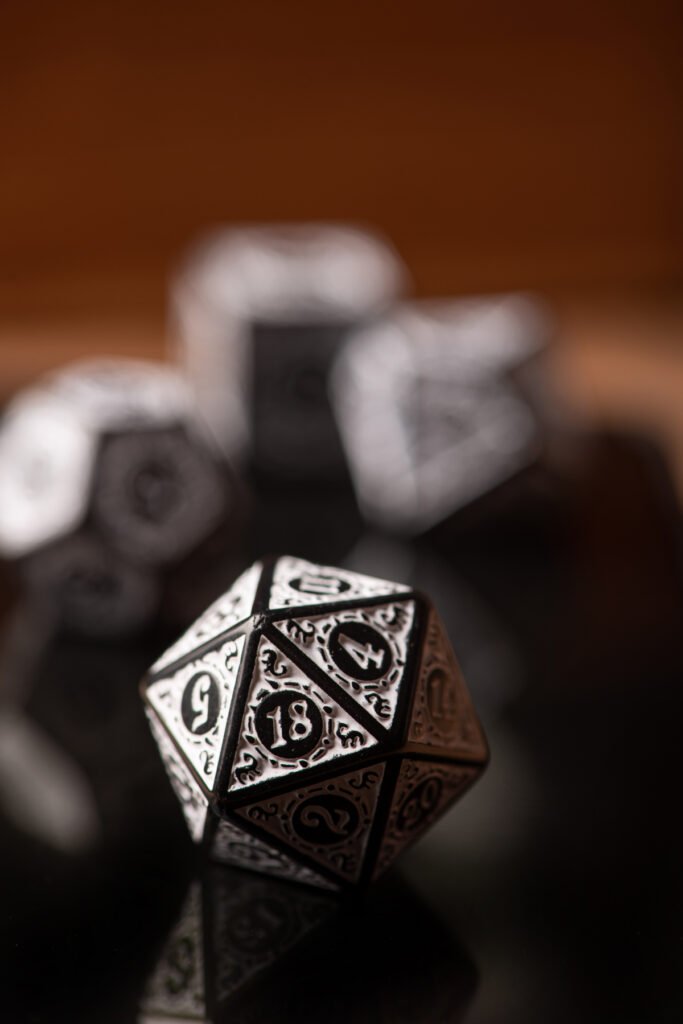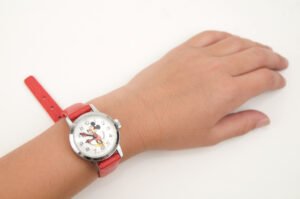Do you know that dice are antique items that were discovered around 5000 BC? Their material, shape, and design from different eras tell a unique story, and if you are lucky, you might already own a vintage die!
All you need is a good understanding and a keen eye to identify vintage dice, and this is exactly what this article is about. So, go ahead, give it a good read, and become the master of vintage dice identification and valuation!
Key Takeaways
- The earliest dice are made from bones, clay, ivory, glass, bronze, alabaster, marble, bakelite, etc. So, look out for those, as they can cost up to $1,000.
- The highest-selling vintage die was sold at an auction for approximately $18,000. It was a Roman Glass d20 Dice from the 2nd century.
- Twenty-sided polyhedron die, known as an icosahedron, traces its history to Romans around the 2nd century BC and is thus a rare vintage item.
- An antique bronze dice from the ancient Roman empire is a rare commodity costing close to $100.
Key Features of a Vintage Dice

Vintage dice are different from modern ones based on their size, design, material, and more. Here’s how you can identify them.
- Often made from bones, ivory, celluloid, or bakelite.
- Show signs of wear, discoloration, patina, oxidation, sprue marks, etc.
- Engraved with brands, logos, initials of firm or place.
- Unusual designs and patterns – astrological signs, animals, birds, figures, and god faces.
- Belongs to Egyptian, Roman, Indus Valley, Art Deco, medieval century eras, etc.
The History of Vintage Dice
The earliest dice are believed to have been found in 5000 BC with two sides, one flat and one round, and made from a stick, seed, or shell. Soon, knucklebones and ivory were used as dice for fortune-telling, and the evolution continued.
The oldest known dice were found in a game set found in Burnt City, Iran, around 2800-2500 BCE, and a game of senet in Egypt around 3000-2500 BCE. Romans and Greeks thoroughly enjoyed playing with dice made from bone and ivory. Even 20-sided dice were used in Rome and Egypt around the 2nd century.
The unearthed terracotta dice found from graves at Mohenjodaro and other Indus Valley sites are dated between 2500 and 1900 BCE. These were the oldest known cubic dice made from clay or bone. Later models were uniquely made from marble, amber, and metals.
Post-16th century, 10-sided and 8-sided dice were also introduced and given mathematical meaning. Soon, the invention of non-cubical, spherical, non-numeric dice made from bakelite, celluloid, glass, and soft plastics was on the way!
5 Main Types of Vintage Dice and Their Base Prices
These are the main types of vintage dice that every collector should know about.
1. Polyhedral Dice

These types of dice have multiple – 4, 6, 8,10, or 20 sides, along with some multi-color swirls or marbling effects. They may be marked by numbers, symbols, or spots, often with uninked numbers, mold lines, or game-specific engravings. They typically cost between $30 and $200.
2. Standard Dice
The regular six-sided cube, with mythological, cultural, or natural designs, is available at almost every thrift or online store. They can be found in several materials, including wood, stone, glass, and metal but usually plastic. They usually cost from $10 to $1,000!
3. Crooked / Loaded Dice
These special dice are altered in a way that adds extra weight on some sides, making the dice roll in a biased way. Usually, they have rough surfaces and random pips, with both even and odd numbers. Overall, they cost $10 – 200.
4. Promotional Dice
These are commercial dice that are used for the promotion of a product, company, or event. Usually, one side of the die is replaced by the logo or slogan of the brand. These unique dice are priced between $5 and $150 or more.
5. Teetotum Dice
A teetotum, or a spinning dice, is a unique dice with four, six, or eight sides and a pointy base and top to spin it. Unlike regular dice, it has inscribed numbers, glyphs, and federal marks that make it stand out. You might also see unique instruction tables and booklets, raising their cost up to $250.
6 Factors to Identify And Value Vintage Dice
Common old dice from the late 19th or 20th century are only worth around $2 to $10, but if a dice is invented during ancient Roman and Greek times, it will cost a significant sum of money. Let’s learn how the dice’s age, materials, and other factors affect it final market value!
1. Dice’s Age and Significant Eras

Even though there is no record of dice’s origin, they can be significantly divided into their earliest, pre and post-15th era. Features like material, style, shape, etc., separate the timeline of these eras. Check them out below.
| Significant Era | Main Features | Estimated Cost (Set) |
| 5000 – 1800 BC | Knucklebones, bones, ivory, bronze, terracotta, material used, non-numeric, simple markings on random objects like sticks, seeds, shells, etc. | N/A |
| Pre-15th century | D20 and d14-sided dice, made from bones, ivory, wood, asymmetrical shapes, etc., cubical, prime arrangements, etc. | N/A |
| Post-15th century | Colorful, variety of styles like gem or swirl, etc., cubic and non-cubic shapes, made from bakelite, plastic, celluloid, etc., Dungeons and Dragons era, standardized and symmetrical shapes, sevens arrangement, etc. | $10 – $1,000+ |
2. Materials

The easiest way to spot a vintage dice is via its material. For instance, bone, wood, and metals were used before the onset of the 15th century, after which soft plastics, celluloid, and Bakelite were used for dice making.
Check out the table to see how the dice material affects its resale cost!
| Material | Time Period | Estimated Cost (Set) |
| Bone | 5000 BC – 1800 BC | $30 – $700 |
| Wood – Pine, Beech & Oak | Pre-15th century | $15 – $200 |
| Metal – Brass, Copper & Iron | Pre-5th century | $20 – $1,000 |
| Bakelite | Early 19th century | $10 – $2,000 |
| Celluloid | 19th century | $20 – $70 |
| Glass | 1800s – 1900s | $20 – $200 |
Pick antique dice with an etched, gilded, lacquered, or hand-painted finish for the best value.
3. Mold & Brands
Once you have an eye and keen understanding of vintage dice molds, you will find it rather simple to tell which one comes from a different yet significant era. This table would definitely help!
| Brand Name | Mold Characters | Estimated Price |
| Chessex | Underlined 6 and/or 9, 7 with a hook on the horizontal line, 1 has an upstroke, 3 with rounded top half, etc. | $10-$100 |
| Kraken | Leaner fonts, a stylized logo, 4’s diagonal line is a little convex, etc. | $15 – $200 |
| Q Workshop | Distinctive design inspired by various themes like runic and steampunk, intricate patterns, etc. | $15 – $50 |
| Koplow | 1 has an upstroke with a horizontal line at the bottom, 3 has a triangular top half, d4 is bottom read usually, large dot behind 6 and 9, rounder zero, etc. | $10 – $50 |
| Crystal Caste | 6 and/or 9 with a dot, no hook on 7, it doesn’t have an upstroke, 0 is more rounded than usual, etc. | $10 – $50 |
| Game Science | Pointy with crisp edges, sprue marks, uninked and untumbled, etc. | $10 – $40 |
Try to get vintage dice with a foreign, 4-sided Egyptian or 6-sided Roman, Indian, Chinese, or European make for better returns.
4. Unique Shape
Apart from material & brands, you can also identify a vintage die simply by noticing its shape. If it’s cubical, its origin can be traced back to 2000 BC, making it the most vintage on the list.
And here’s how the vintage dice shapes can help you value them:
| Dice’s Shape | Identifying Features | Estimated Price |
| Cubical(2000 BC) | Hexahedron, six sides, the upright number is the value of the roll, etc. | $10 – $200 |
| Spherical (19th century) | Spherical shape, an added internal activity shaped in a dual polyhedron, etc. | $10 – $40 |
| Other Non-Cubical(1960s) | Even equilateral triangles (d4, d8, d12, d20), three visible sides at one time, etc. | $20 – $200 |
5. Edges

Most of the old dice had hand-carved or chamfered edges. But, by the 1700s, makers added different grooved, indented, or rounded edges for better grip and rolling. So let’s check how to identify and value old dice with such varying edges:
| Vintage Dice Edges | How to identify them? | Average Value |
| Rounded edges | Look for smooth & curved edges, just like a rounded rectangle | $30 – 200 |
| Chamfered edges | Beveled or slightly slanted edges with varying, angular cuts | $50 – 300 |
| Irregular or hand-carved edges | Rough or uneven edges with minute hand-carving or religious and political symbols | $40 – 2000, as per the condition |
| Faceted edges | Multi-faceted edges, just like a hexagon or polyhedron | $50 – 300 |
| Indented & Grooved edges | These have visible grooves & indentations along the top surface for better grip & rolling | $30 – 600 |
6. Aging Signs and Irregularities
It is no surprise that vintage dice show signs of aging, such as yellowing or discoloration. The surface can also develop a patina over time, along with irregular or rusty edges costing between $10 to $1,000. However, if the antique dice are damaged or have cracks, their value may decrease.
Where to find the best vintage dice for purchase?
You can find the most vintage dice at online stores like Amazon, Etsy, and eBay, but you can also visit your nearest thrift store.
Should I purchase a discolored vintage die?
If it is not too damaged, a discolored vintage die can be handsomely precious and, thus, cost between $50 to $1,000.
Are old dice worth money?
If you find dice invented during ancient Roman and Greek times, it will cost a significant sum of money.
Now that you know how to get your hands on rare vintage dice, go ahead and find a stunning piece for yourself at the nearest antique store. If you have fun reading about dice identification, you’d surely love to learn to identify and appraise antique marbles, too!
Note: This article is intended for informational, educational, and entertainment purposes only. Some images are illustrative and may not represent actual brands, products, or related entities. All trademarks, product names, brand logos, packaging, and other intellectual property referenced remain the exclusive property of their respective owners. Any brand mentions or references are provided solely for descriptive and educational context and do not imply any formal or commercial association.









